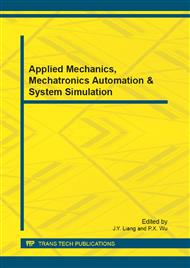p.1452
p.1457
p.1462
p.1469
p.1475
p.1481
p.1487
p.1493
p.1497
A Novel Registration Algorithm for Pol-InSAR Images Based on the RVOG Model
Abstract:
In the processing of the polarimetric interferometric synthetic aperture radar (Pol-InSAR), the image registration is a key procedure. If the error of image registration occurs, the signal-to-noise ratio (SNR) of the interferometric image will be lowered and the precision of the height estimation will be decreased. Numerous registration algorithms have been proposed to solve the above-mentioned problem. However, in forested areas, the effect of volume scattering is significant. This property yields the fact that the characteristic of phase and frequency in the interferometric image is not obvious, leading to the worse performance of conventional registration algorithms. In this paper, a novel registration algorithm based on the random volume over ground (RVOG) model is presented. The method employs the fact that the coherence coefficients of the same pixel are displayed as a beeline in the complex coordinate plane for forested scenes. The image offset which yields the best linearity of coherence coefficients will be treated as the final estimation result. Simulation results verify that this method is able to provide the image registration estimation in the pixel and sub-pixel levels.
Info:
Periodical:
Pages:
1475-1480
Citation:
Online since:
September 2012
Authors:
Keywords:
Price:
Сopyright:
© 2012 Trans Tech Publications Ltd. All Rights Reserved
Share:
Citation:


